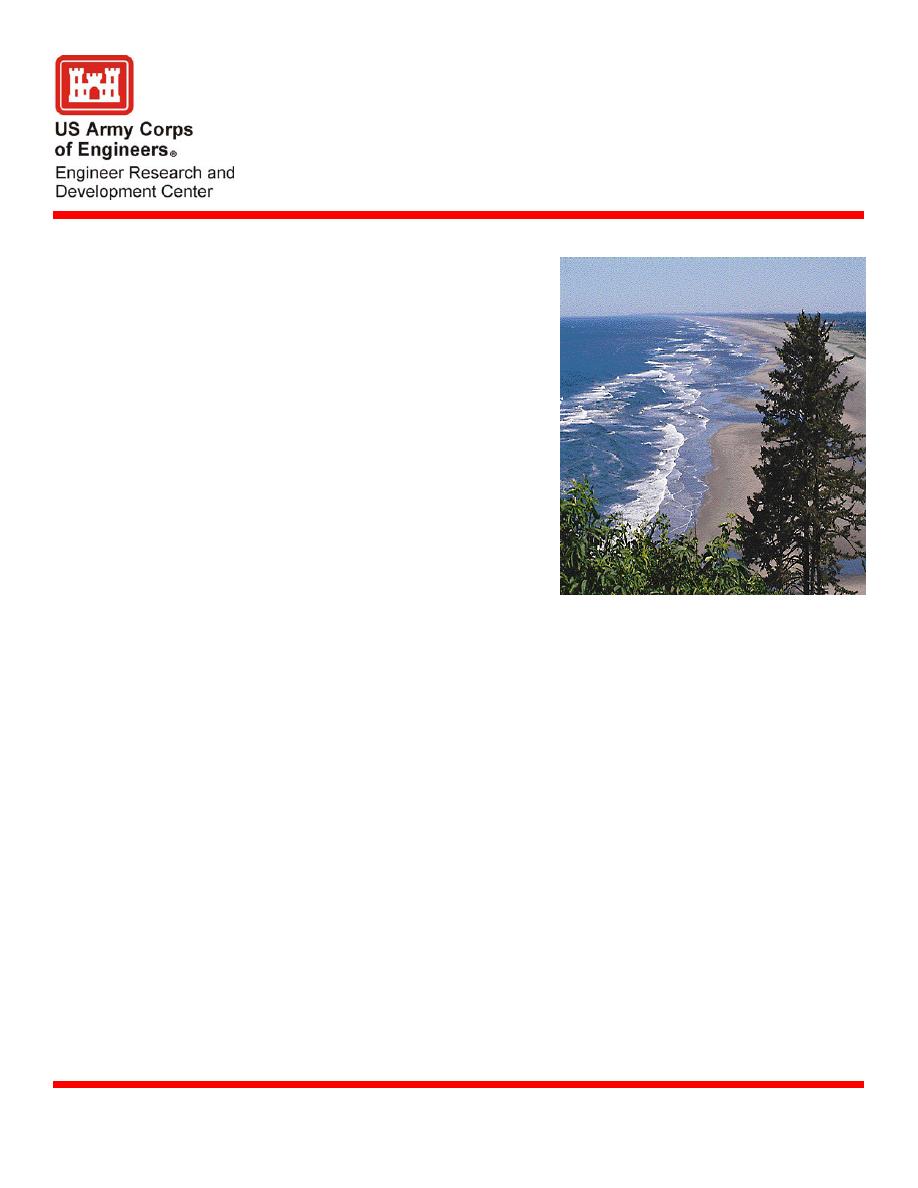
Transformation-Scale Waves
Description
Enhance the accuracy, range of applicability, and efficiency of the Corps' workhorse wave
transformation technology, STWAVE.
Near the coast, waves transform due to
Issue
complex interactions with the bottom.
Refraction, shoaling, local wave growth,
wave-current interaction, and breaking
modify the critical design parameters of
wave height, period, and direction.
Longshore and cross-shore variations in
wave parameters are required for design
and maintenance of beach, inlet, harbor,
and channel projects. Nearshore waves
provide the primary driving force for
sediment transport, which is sensitive to
breaking wave angles and energy
dissipation. Accurate and efficient tools
are required to estimate nearshore waves.
Users
Corps Districts Offices, other Government Agencies, Universities, and Private
Consultants.
STWAVE model efficiency has been increased by approximately 50 percent, allowing
Products
larger spatial coverage and higher resolution solutions. An advanced grid nesting
technique has been developed for more efficient simulations. Formulations for wave-
current interaction and wave breaking have been developed. STWAVE has also been
extended from a half-plane model to a full-plane model (including propagation and
generation from all directions).
Additionally, STWAVE support software and
documentation have been made available online. Periodic workshops have been given to
transfer the technology to field users. The next workshop is scheduled for August 2005 in
San Francisco, California.
The numerical wave technology offers simulation of the waves that drive nearshore
Benefits
processes for Corps navigation and coastal flooding projects, allowing the Corps to choose
the most cost-effective alternatives.
Navigation Systems Program. Program Manager: James Clausner.
Corps Program
Dr. Jane McKee Smith at 601-634-2079 (jane.m.smith@erdc.usace.army.mil), or Ms.
Points of Contact
Ann
R.
Sherlock
at
601-634-2074
(ann.r.sherlock@erdc.usace.army.mil),
http://chl.erdc.usace.army.mil/CHL.aspx?p=s&a=Software;9
Dr. Donald T. Resio, ERDC.
Partners
U.S. Army Engineer Research and Development Center
7 April 2005
Coastal and Hydraulics Laboratory (Research)
www.erdc.usace.army.mil



 Previous Page
Previous Page
